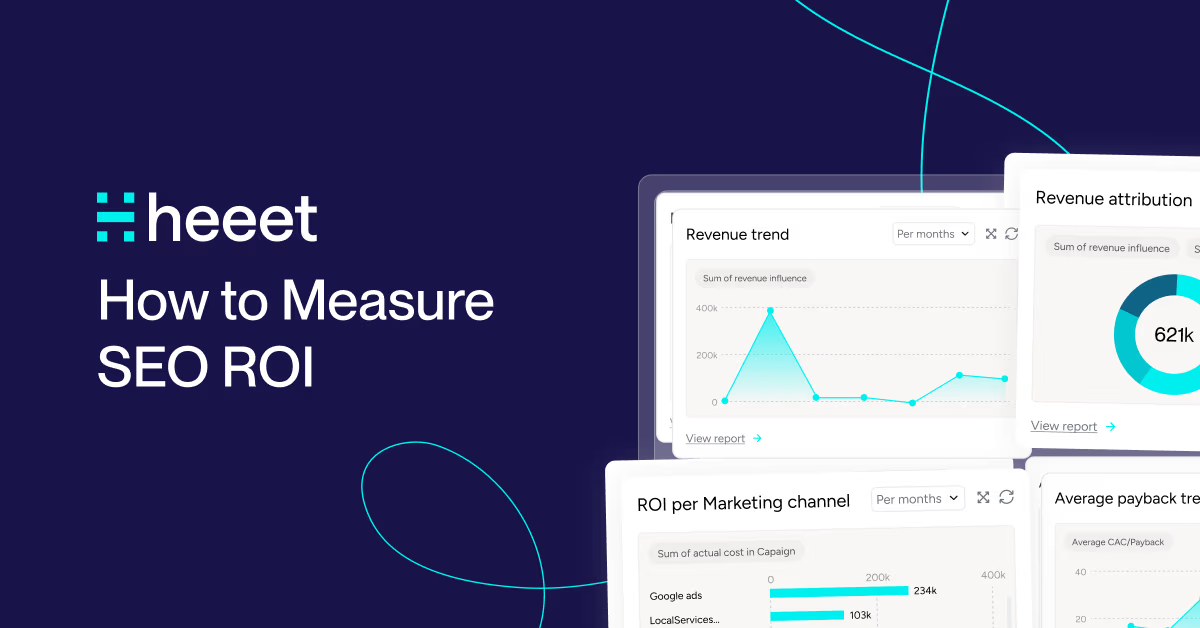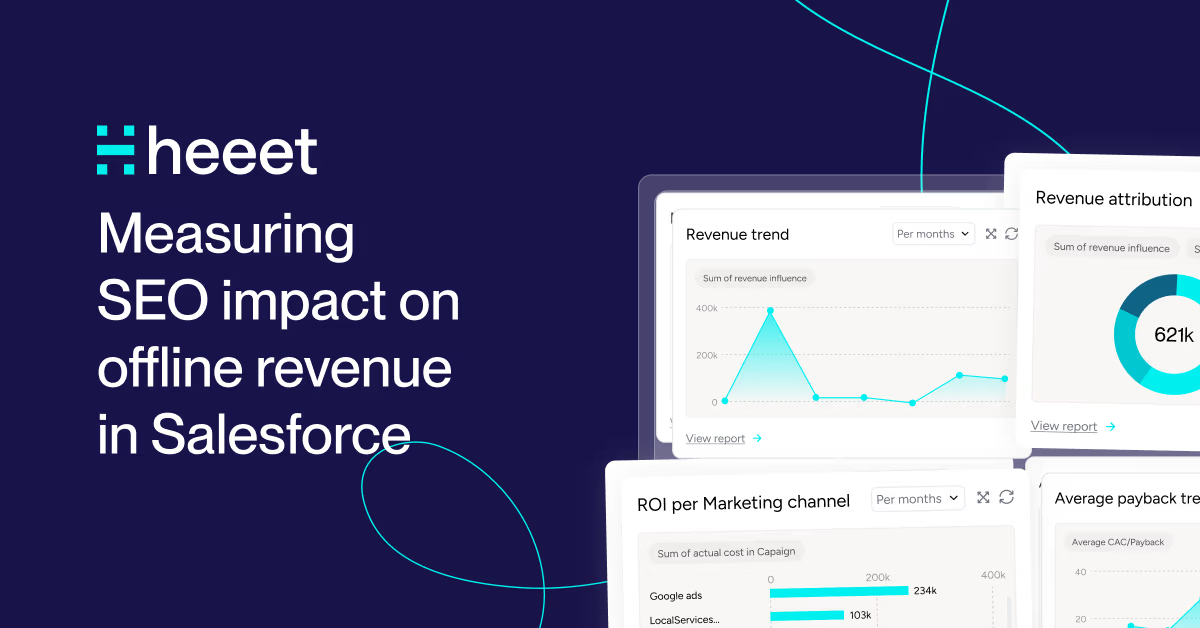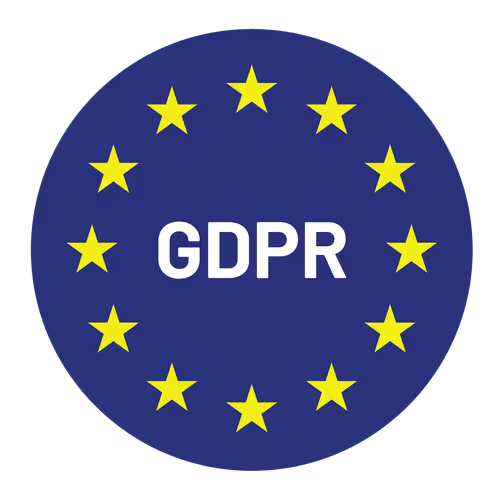Read time :
How to Measure SEO ROI
Measure SEO ROI beyond clicks with Heeet. Connect content, queries, and revenue in Salesforce to prove SEO’s true impact on pipeline and growth


Why SEO Traffic Matters More Than You Think
Search Engine Optimization (SEO) remains one of the most cost-effective digital marketing channels. According to BrightEdge, 53% of all website traffic comes from organic search more than paid search, social, and direct traffic combined. [source]
While paid search offers immediate visibility, SEO drives sustainable, compounding traffic over time. However, measuring its ROI is notoriously complex, especially compared to paid ads where every click is monetized and tracked.
From an attribution perspective, SEO plays a critical role in both discovery and conversion:
- According to a Backlinko study, first-click SEO attribution accounts for 40–50% of user journeys, particularly in high-intent B2B searches.
- However, only around 17% of conversions are attributed to SEO on a last-click basis in many analytics models. This underrepresents its true impact in buyer journeys, especially for longer sales cycles.
In other words: SEO is the unsung hero of your funnel. Let’s explore how to quantify its value properly.
The True Costs of SEO
Understanding ROI starts with knowing your SEO investment components. SEO costs fall into three main categories:
Human Resources
- Content Writers: Researching, writing, and optimizing articles and landing pages.
- SEO Strategists: Keyword analysis, content planning, link building, audits.
- Designers & Developers: Implementing content, improving UX, mobile optimization.
Tools & Software
- SEO Platforms (e.g., Semrush, Ahrefs, Moz): $99–$399/month
- Analytics (GA4, Looker Studio, Hotjar)
- CMS tools and Plugins (e.g., Yoast, SurferSEO)
Infrastructure
- Web Hosting with adequate speed and security.
- Content Management Systems (CMS licenses, plugins, backups).
- Crawling & Monitoring tools for technical SEO health.
These fixed and variable costs are essential to measure ROI accurately and benchmark SEO against other acquisition efforts.
Offline Revenue & the SEO Attribution Gap
One of the biggest pain points in SEO ROI is when revenue is generated offline (e.g., in-store purchases, sales calls, B2B deals) and isn't captured in tools like Google Analytics.
Why this happens:
- Google Analytics (including GA4) typically tracks online behavior only.
- Offline conversions are stored in CRMs (like Salesforce, HubSpot), but rarely tied to the source content or traffic channel.
- Even when goals or events are tracked, there’s no context on what content influenced the decision, especially if conversions occur days or weeks later.
Result: SEO’s role is underestimated, especially in long sales cycles or hybrid commerce models.
A Better Way to Track SEO ROI with Heeet
Use Multitouch Attribution to Capture Full SEO Impact
Rather than relying solely on first- or last-click models, Heeet enables multitouch tracking. This allows you to:
- See every step of the buyer journey across channels.
- Attribute partial revenue credit to SEO content that initiated or supported conversion.
- Recognize the role of educational or awareness content, not just transactional pages.
This offers a more accurate picture of SEO’s contribution to revenue.
Connect Revenue to Initial Content Visited
With Heeet, you can map CRM data (deals, revenue, customer LTV) back to:
- Any content pages viewed.
- The sequence of interactions before a form submission or call.
This helps determine:
- Which articles resonate with your personas and target audiences
- What types of content influence high-value deals.
- Where to invest more in content production.
Link Google Search Console to Revenue Metrics
Heeet integrates with Google Search Console (GSC) to track:
- Impressions, clicks, ranking, CTR for each content.
- Related business outcomes for each content such as leads, converted leads and revenue.
- Content ranking improvements over time and impacts on each business KPIs (leads, revenue, LTV)
This allows marketers to justify further SEO investment with tangible business outcomes not just traffic numbers.
Unlock Real User Intent: Match Search Queries to Revenue
Heeet allows you to capture and store exact search queries, not just keywords. By matching this to your paid ad click data, you can:
- Discover what users were searching for before clicking on your paid keywords.
- Create SEO content optimized for real, converting queries.
- Reduce CPL (cost per lead) by attracting qualified organic traffic for queries you’d otherwise have to pay for.
This data-driven SEO strategy helps you lower acquisition costs and increase organic conversion rates.
Measuring SEO ROI goes far beyond clicks and rankings. When you consider the full picture from costs and content strategy to real revenue attribution SEO becomes a powerful driver of long-term business growth.
Using tools like Heeet, you can:
- Capture the true value of organic content
- Optimize future investments
- Finally bridge the gap between search intent and sales outcomes
You want to learn more about SEO ROI calculation ? Please feel free to book a demo by clicking here.
.svg)
Ready to track prospects from lead to close with Heeet?
Heeet gives marketers and sales professionals at IT & Security firms turn geuss work intro informed decisions that drive revenue while meeting the same secruity technical standards you provide your clients.






